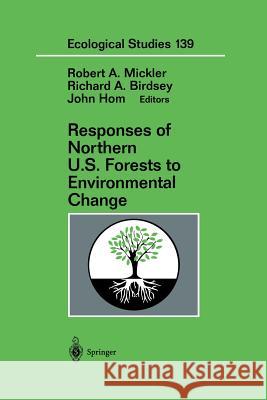Responses of Northern U.S. Forests to Environmental Change » książka
Responses of Northern U.S. Forests to Environmental Change
ISBN-13: 9781461270645 / Angielski / Miękka / 2012 / 581 str.
In the Global Change Research Act of 1990, "global change" is defined as "changes in the global environment (including alterations in climate, land productivity, oceans or other water resources, atmospheric chemistry, and ecological systems) that may alter the capacity of the Earth to sustain life. " For the purposes of this book, we interpret the definition of global change broadly to include physical and chemical environmental changes that are likely to affect the productivity and health of forest ecosystems over the long term. Important environmental changes in the Northern United States include steadily increasing atmospheric carbon dioxide, tropospheric ozone, wet and dry deposition of nitrogen and sulfur compounds, acidic precipitation and clouds, and climate variability. These environmental factors interact in complex ways to affect plant physiological functions and soil processes in the context of forest landscapes derived from centuries of intensive land use and natural disturbances. Research in the North has begun to unravel some key questions about how environmental changes will impact the productivity and health of forest ecosystems, species distributions and abundance, and associations of people and forests. Initial research sponsored by the USDA Forest Service under the United States Global Change Research Program (USGCRP) was focused on basic process-level understanding of tree species and forest v VI Preface ecosystem responses to environmental stress. Chemical pollution stresses received equal emphasis with climate change concerns.











